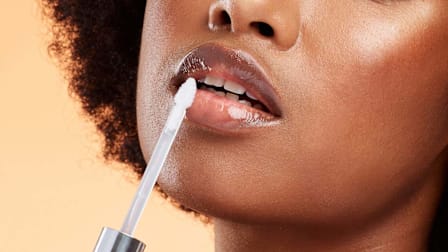Nude Gets a Makeover
As the population grows more diverse, the need for wearable products that match a broad range of skin tones is greater than ever. Some brands are getting the message.
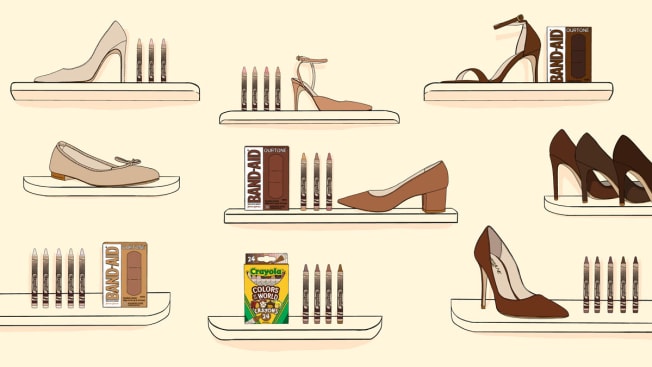
There are ballerinas, and then there’s Misty Copeland, the globally celebrated principal dancer at the renowned American Ballet Theater. The first Black woman to be promoted to the role in the company’s history, she’s also toured with Prince and was named one of 100 most influential people in the world by Time magazine. So it’s hard to imagine Copeland rubbing cheap drugstore makeup all over her pointe shoes. Yet there she is in front of her 1.8 million Instagram followers “pancaking” her ballet shoes attempting to #MakeAPointe that the “European Pink” ones aren’t made with Black and brown dancers like her in mind.
While it’s true that no person is really pink, it’s also true that pink blends with white-toned skin and contrasts against darker shades. In ballet, this matters because it’s so important to the art form’s aesthetic “that we create a long through line that continues on from the tips of our toes to our head, and it should all be the same color," Copeland explains in the video.
Ballet shoes are just one example of how manufacturers of wearable products that users prefer to have blend in or look “nude” have long matched white skin as the default. From clothing items like shoes and lingerie to wearable medical devices like hearing aids, “nude” or “flesh”-colored items have frequently centered only white people’s skin. Now Copeland’s voice is one of many urging the market to expand the nude palette to embrace a larger swath of the buying public.
What Color Is ‘Flesh’?
Perhaps the first major consumer brand to acknowledge that we humans come in a range of skin tones was Crayola, which was nudged toward that realization in 1961.
That year June Moss-Handler, a Columbia University doctoral student in education working on her dissertation, observed white kindergarteners ridiculing their Black classmates for not having flesh. They did that because the crayon called “flesh” in the Crayola crayon box didn’t look like Black skin.
Crayola Goes Global
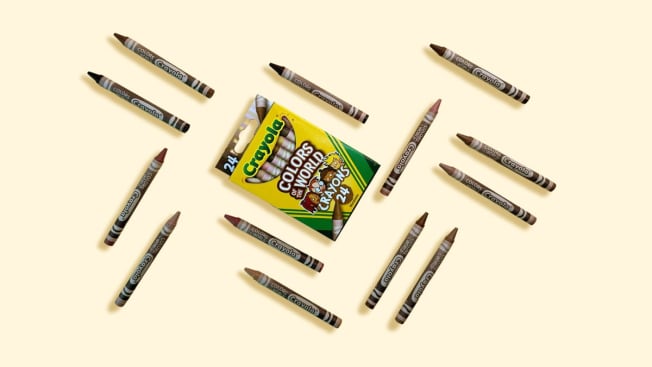
Photo: Consumer Reports Photo: Consumer Reports
So she sent the Crayola company a letter sharing her observation. She complained that the flesh crayon did not acknowledge the real range of skin tones and reinforced negative attitudes about dark skin. Moss-Handler lobbied for a name change.
Perhaps remarkably, she got one. In 1962, Crayola rechristened the flesh crayon peach. Still, it took Crayola nearly 30 more years before it launched “Colors of the World,” a 24-shade crayon palette for skin tones ranging from the soft pink of “light rose” to a rich brown named “very deep almond.”
The reception was ecstatic. “Colors of the World” sold out in preorder and won the Toy Associations Creative Toy of the Year in 2021. The product’s success prompted Crayola to expand into markers, pencils, paint, and even construction paper, all inspired by “global skin tones.”
Also in 2021, Johnson & Johnson, another major consumer product company, diversified its interpretation of nude. The maker of the venerable Band-Aid bandage launched Ourtone, adhesive bandages that come in three brown skin tones. Band-Aid originated the adhesive bandage category in 1920, but when it comes to being down with brown, they were late to the party.
A Better Bandage
While it took a long time for Johnson and Johnson to recognize a gaping hole in the marketplace, some smaller businesses have had more finger-on-the-pulse consumer awareness. Unfortunately, their comparative lack of marketplace clout compared with big brands has sometimes hindered their efforts.
“Finally, someone thought of you!” was the headline of the Flesh Tone Soul-Aid adhesive bandage ad back in 1978. A 100 pack of the “rich natural brown-toned” bandages was available for $3.00, plus 50 cents postage as Soul-Aid was available primarily through mail order. But the company was out of business by the early 1980s.
Conceal and Heal
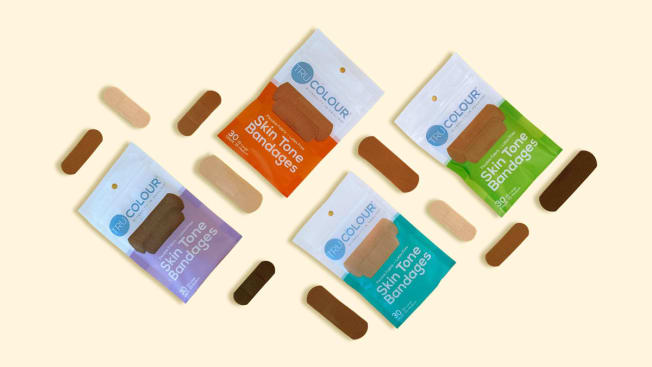
Photo: Consumer Reports Photo: Consumer Reports
Next up: Ebon-Aide bandages, which hit store shelves in 1998 with a five-color variety pack of 50 bandages in liquorice, mocha, coffee, cinnamon, and honey. “At last, a protective strip that’s made in your shade!” the package proclaimed. Though some major retailers like Rite Aid carried the line, the company was shuttered after four years. In a 2013 interview, the company’s owner said the bandages were largely for sale in ethnic product aisles, away from other first-aid offerings, making it difficult to connect with consumers.
Still available at select Target stores and at target.com and Amazon are Tru-Colour Bandages, which come in numerous skin-tone shades. In business since 2014, the company was launched when one of its co-founders, a white man, put a Band-Aid on the forehead of his three-year-old Black adopted son, making the mismatch apparent.
“Originally we got a lot of pushback saying this is dumb, why do we even need this,” says Ryan Tolbert, the company’s chief of digital marketing. But where critics may see “woke,” Tolbert sees value. “Customers don’t know what they want until they see it,” he says. “This is important on a micro-affirmational level.”
More Fitting Fashion
Fashion is another area where solo entrepreneurs noted the need to reimagine the concept of nude before more mainstream brands did.
Jamela Acheampong, who defines her skin tone as “a beautiful mahogany,” couldn’t find a shoe to match it. At first, she dyed shoes to blend in with her skin color. But that was time-consuming and frustrating, so in 2017, she founded Kahmune, a luxury brand for diverse skin-tone footwear and leather goods. Filling domestic as well as international orders, the Atlanta-based brand’s products are available in a range of 10 shades “named after the women of the cities and regions whose skin tones inspired them,” Acheampong says. The shoes don’t come cheap. A pair of Kahmune suede flats are $235, while the best-selling Becky Pump in patent leather tops out at $445.
High End High Heels
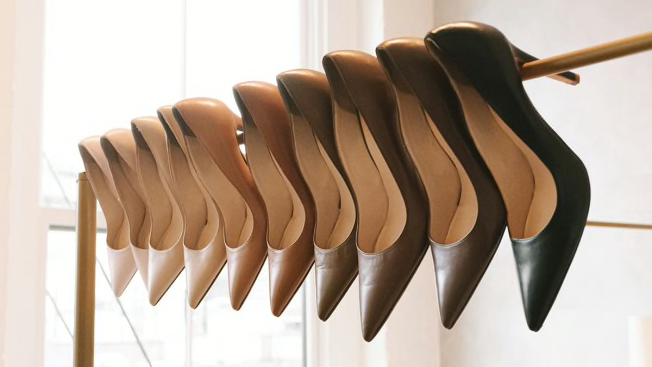
Photo: Kahmune Photo: Kahmune
Acheampong remembers a potential investor laughing in her face, saying there would be no demand and that the customers she could find wouldn’t be able to afford her shoes, which are crafted in Italy. “I wish I remembered who it was, so I could show him the orders I’ve gotten for seven and 10 pairs at a time, and how we sold out” certain lines Acheampong says. “The demand is unmatched. And our consumers keep coming back because they know they’re not an afterthought.”
Entrepreneur Ade Hassan similarly sees her brand, Nubian Skin, as filling a previously unsatisfied need. In business since 2014, her London-based company offers lingerie and undergarments in four shades (shown below) for “melanin-blessed women.” She even outfitted Beyoncé and her dancers with performance underwear for the 2016 “Formation” world tour. And in 2022, at the urging of a breast and oncoplastic surgeon, Nubian Skin developed a post-surgical prosthetic breast form, the first ever available in a variety of skin tones.
Basics Beyond Beige
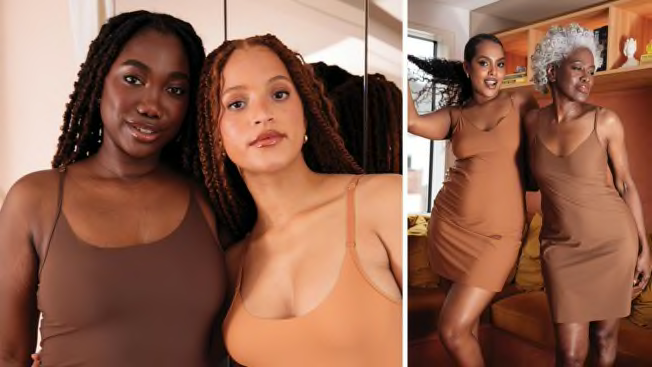
Photos: Nubian Skin Photos: Nubian Skin
Gaps That Remain
For all the marketplace progress, there are still stubborn holes.
Wearable medical devices are one of them. Although hearing aid manufacturers now offer devices in an array of bold colors and finishes, for people of color more concerned with devices that blend in rather than stand out, the pickings are slim. This may help explain why while about 29 million adults in the U.S have trouble hearing, only about a fifth of those who could benefit from a hearing aid actually use one.
Some newer over-the-counter hearing aids come only in black. Most prescription-type over-the-ear devices still come in only in standard beige, gray, or black. For those with short hair especially, camouflaging a hearing aid does not have an easy solution.
Perhaps change will come to this area, too. “As consumers, we’re pretty clear on what our needs are and what’s missing on the shelves,” says brand strategist Bluitt. She feels “brands need to understand how exclusionary some of their product offerings are so they can step up to the plate.”
Meanwhile, she expects start-up companies to keep filling voids, taking a bit of existing brands’ market share and as a result, she says, "inspiring larger corporations to follow suit.”
Correction: This article, originally published Feb. 10, 2024, has been updated to correct the spelling of entrepreneur Ade Hassan.

















